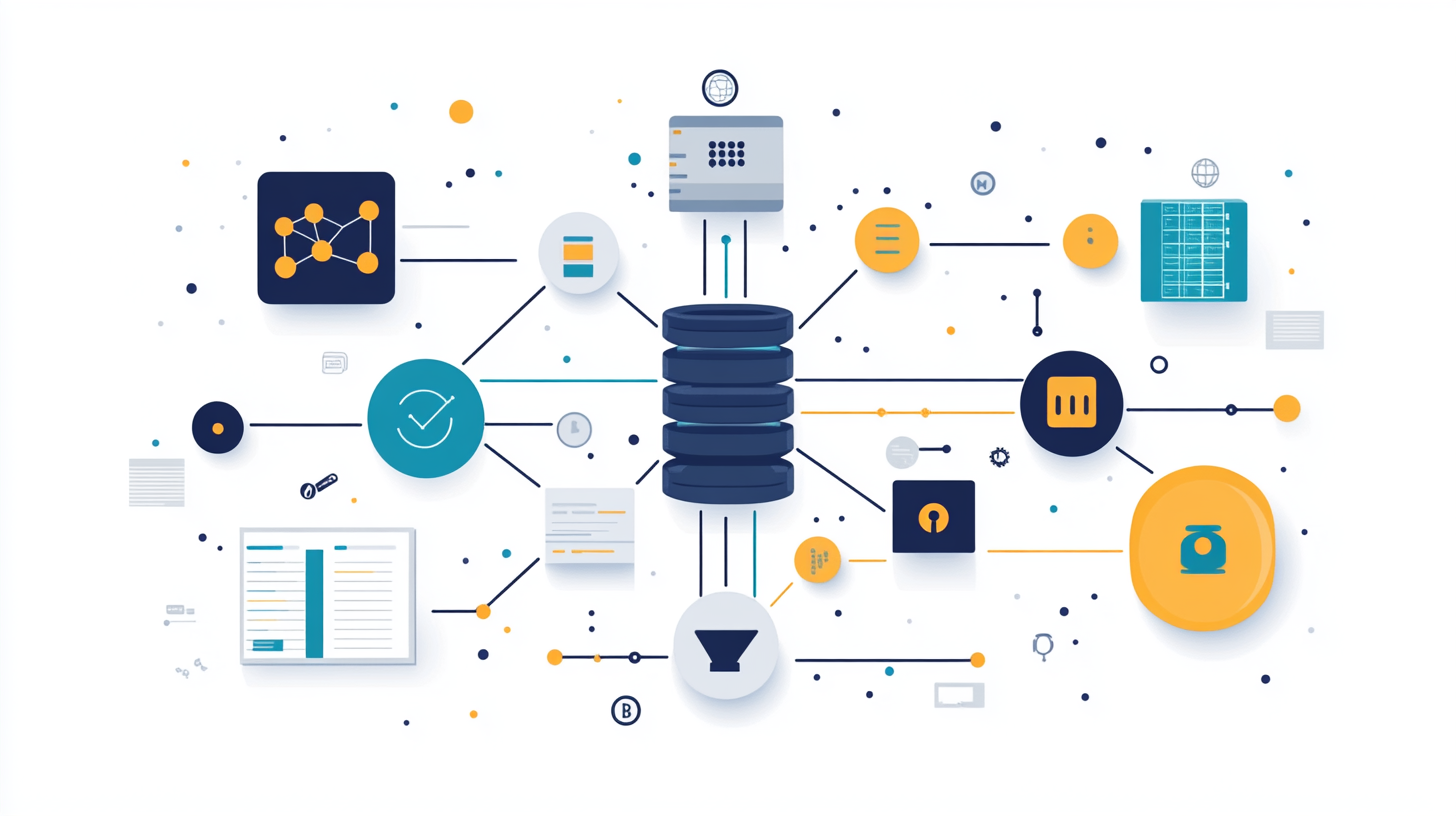When Code Breaks and So Do You: Turning Project Failures Into Career Fuel
When code fails, it hurts—but it also teaches. This article explores real engineering failures, the emotional fallout, and how reflection, resilience, and culture can turn setbacks into stepping stones for growth. Failure isn’t the end—it’s a critical part of becoming better.
Introduction
Failure is not the opposite of success—it’s a crucial part of it.
In software engineering, this truth is easy to forget. Amid the pressure of deadlines, system uptime guarantees, and stakeholder expectations, failure often feels catastrophic—especially when it’s your code that brought the system down, or your architectural decision that led to a missed launch. And when the postmortem meeting feels more like a courtroom than a learning experience, the emotional weight of that failure can linger far longer than the technical debt.
High-stakes software failures are, by design, inevitable. We work in complex, distributed systems built and maintained by humans, and even the best testing pipelines, CI/CD strategies, or observability stacks can’t fully shield us from entropy—or human error. From Netflix outages traced to a single misconfigured rule to GitHub deployment issues caused by unexpected side effects, these events remind us: things break.
But here’s the paradox—while technical failure is a given, talking about failure remains taboo. There’s still a stigma, especially in high-performing engineering organizations, around being the person whose judgment didn’t hold, whose code didn’t ship, or whose decision led to downtime. That silence not only isolates engineers but also robs the industry of the chance to grow more mature, humane, and effective.
This article explores the intersection of software failure and personal growth. We'll examine:
- Real project breakdowns with tangible consequences.
- The human and psychological cost of these incidents on engineers and teams.
- How individuals recover emotionally and professionally after such events.
- Practical frameworks and cultural practices that turn failure into career development.
- The role of leadership and engineering culture in breaking the stigma and building resilience.
What emerges from this exploration is not just a cautionary tale, but a roadmap. One that repositions failure not as a dead end—but as a vital part of the journey toward technical excellence and personal mastery.
High-Stakes Failure: Case Studies
Netflix's 2012 AWS Outage: A Lesson in Resilience
On October 22, 2012, Amazon Web Services (AWS) experienced a service degradation in its US-East region, affecting numerous high-profile clients. Netflix, heavily reliant on AWS infrastructure, faced intermittent issues. However, due to their proactive resilience strategies, the impact on Netflix's customers was minimal.
Context: Netflix's architecture was designed with redundancy in mind, operating across multiple Availability Zones (AZs) and employing tools like Chaos Monkey to test system resilience.
Failure Point: The degradation was isolated to a single AZ. Netflix's monitoring systems detected the issue, prompting a swift evacuation of the affected zone.
Immediate Impact: Some customers experienced intermittent problems, but the majority remained unaffected due to Netflix's multi-AZ deployment strategy.
Root Cause: The incident stemmed from AWS's EBS service degradation in one AZ. Netflix's avoidance of EBS for data persistence and their emphasis on AZ redundancy mitigated the potential impact.
GitHub's 2018 24-Hour Outage: The Perils of Split-Brain Scenarios
In October 2018, GitHub experienced a significant outage lasting approximately 24 hours, disrupting services for millions of developers worldwide.
Context: GitHub's infrastructure spanned multiple data centers, with a MySQL database cluster split between East and West regions.
Failure Point: A network partition caused the database cluster to split, with both halves electing themselves as the primary, leading to a "split-brain" scenario.
Immediate Impact: The inconsistency between the two database clusters resulted in service disruptions, including issues with pull requests, webhooks, and repository updates.
Root Cause: The network partition led to both sides of the database cluster operating independently, causing data divergence. Reconciliation required manual intervention to ensure data consistency.
Web Service Outage Due to Misconfigured Firewall: A Cautionary Tale
In November 2023, an e-commerce platform experienced a significant outage, highlighting the critical importance of configuration management.
Context: The platform's services relied on multiple APIs, with firewall rules controlling access.
Failure Point: A misconfigured firewall rule inadvertently blocked traffic to a critical API endpoint.
Immediate Impact: The outage lasted 2.5 hours, reducing site availability by 50%. Users faced slow page loads and error messages, affecting the platform's revenue and reputation.
Root Cause: The misconfiguration went unnoticed until user complaints prompted an investigation. The issue was resolved by updating the firewall rules to allow necessary traffic.
The Human Cost
Behind every high-severity incident is a team of engineers—often exhausted, anxious, and under immense pressure to restore service while avoiding blame. While systems may be architected to fail gracefully, people rarely are.
Emotional Fallout: Shame, Isolation, and Anxiety
After GitHub's 2018 outage, a core infrastructure engineer (anonymous, speaking in a dev.to retrospective) recalled the tension: “We knew the database split-brain scenario would be hard to recover from, but what kept me up wasn’t just the tech—it was wondering if this would define my career.” The outage, though caused by a complex mix of infrastructural and network behavior, left some team members second-guessing their prior design decisions, despite having followed reasonable engineering practices.
This is not uncommon. When a system fails, engineers often internalize the failure. This can manifest as:
- Shame: A deeply personal feeling that you are inherently flawed because something broke under your watch.
- Impostor Syndrome: Doubting your own competence, especially when working in high-performance teams or visible roles.
- Social Withdrawal: Avoiding coworkers or refraining from engaging in meetings out of fear of being blamed or scrutinized.
A 2016 survey by GitPrime (now Pluralsight Flow) found that nearly 1 in 3 developers had experienced burnout in the wake of an incident or deadline failure. The same research revealed that engineers who felt unsupported by leadership were more likely to report symptoms of depression or anxiety.
Professional Repercussions: The Fear of Fallout
In some companies, failure is not just emotionally costly—it’s career-threatening. Poorly handled postmortems can turn into witch hunts, where the goal shifts from learning to assigning blame. In extreme cases, engineers have been demoted, passed over for promotion, or even fired due to public-facing technical failures.
An engineer at a SaaS startup (who requested anonymity) shared their experience after a failed product launch: “The code worked in staging but tanked in production. No rollback plan. The execs didn’t understand the complexity and framed it as a personal failure. I was quietly sidelined after that.”
This kind of culture not only discourages innovation but breeds fear-based development—where the goal becomes not to build well, but to avoid mistakes at all costs.
Systemic Factors: Why the Cost Is So High
The high emotional toll of failure in software engineering is compounded by several industry-wide factors:
- Hero Culture: The belief that “10x engineers” can and should prevent failure reinforces unrealistic expectations.
- Lack of Psychological Safety: Teams where mistakes are penalized rather than examined breed silence and anxiety.
- Poor Incident Communication: Without clear, calm leadership during an incident, engineers may spiral into confusion and blame.
Research from Google’s Project Aristotle found that psychological safety was the most important factor in high-performing teams. Yet in the aftermath of a failure, that safety often disappears—just when it’s needed most.
Recovery and Reflection
If failure is inevitable, then recovery must be intentional. Yet, the recovery process—both technically and psychologically—is often ad hoc, under-resourced, and deeply personal. What distinguishes high-performing teams from fragile ones is not the absence of failure, but the presence of structured reflection and support afterward.
The Postmortem: Engineering’s Group Therapy
The postmortem is a well-known ritual in engineering—an opportunity to dissect what went wrong and how to prevent recurrence. But a postmortem’s value hinges on whether it's used as a tool for learning or blame assignment.
GitHub’s postmortem following their 2018 outage stands as a model of transparency and rigor. The team published a detailed breakdown of the split-brain incident, clearly documenting timelines, contributing factors, and corrective actions. Notably, they emphasized systemic issues over individual blame. One line from the report resonates deeply:
“No single engineer or change caused this outage. It was the result of multiple systems interacting in unexpected ways.”
That framing matters. It models psychological safety and encourages engineers to share insights candidly, without fear of repercussions.
Best practices for postmortems include:
- Using blameless language (“The system did X,” not “Alice forgot Y”).
- Focusing on contributing factors rather than root causes.
- Including action items with clear owners and follow-up mechanisms.
- Sharing learnings across the organization—not burying them in a private doc.
Personal Reflection: The Inner Postmortem
Alongside team retrospectives, many engineers engage in a quieter, personal process of reflection. For some, that means journaling after a failure to unpack their emotions and insights. For others, it means talking to mentors or trusted peers who can offer perspective without judgment.
One senior engineer at Shopify described using a journaling framework adapted from the Retrospective Prime Directive, starting each entry with: “Everyone did the best they could with the information they had at the time.” This simple affirmation reframes self-judgment into curiosity.
Other tools that engineers have found helpful include:
- 1:1 Coaching: Especially common among senior engineers and leads, coaching helps unpack the emotional impact of failure and strategize career growth.
- Therapy: Particularly when burnout, anxiety, or trauma are involved, therapy can be essential for recovery.
- Mentorship Circles: Groups that meet to share real stories of failure and growth normalize these experiences across teams and roles.
Leadership’s Role: Modeling Vulnerability
Recovery is not just a personal endeavor—it is deeply cultural. When engineering leaders openly acknowledge their own failures, it creates permission for others to do the same.
Charity Majors, co-founder of Honeycomb.io, frequently shares her engineering mistakes in public talks and blog posts. In a 2021 article titled “The Best Engineers Make the Best Mistakes,” she writes:
“If you’re not screwing things up now and then, you’re not shipping fast enough. Learn faster. Fail publicly. It's how we grow.”
Such vulnerability from leadership dismantles the myth of the infallible engineer and turns failure into a shared experience, not a private shame.
Building Resilience
In the world of distributed systems, resilience is the ability to withstand faults and recover gracefully. In the world of humans who build those systems, resilience is the capacity to learn from disruption, grow through stress, and avoid collapse when things go sideways.
But let’s go one step further—what if we aim not just for resilience, but for antifragility? A term coined by Nassim Nicholas Taleb, antifragility describes systems that actually improve through disorder. When applied to engineering cultures and careers, the implication is powerful: failure isn’t something to avoid at all costs—it’s a fuel source, if we know how to harness it.
Habits That Foster Personal Antifragility
While no two people process failure the same way, there are practices that reliably help engineers move from reaction to reflection, and eventually, growth.
1. Failure Journaling
Some engineers keep a dedicated “failure log”—a private document where they record incidents, their roles in them, what went wrong, and what they’d do differently next time. This isn’t a guilt ledger; it’s a personal learning database.
2. Pre-Mortems
Coined by psychologist Gary Klein, a pre-mortem imagines a future failure and asks, “What went wrong?” It’s a preventive exercise, but it also conditions you to expect—and prepare for—problems without self-blame.
3. Structured Recovery Time
After major incidents or launches, engineers at companies like Atlassian and Dropbox often take “cooldown” periods—a few days of reduced workload, cleanup tasks, or learning-focused time. This formal acknowledgment of cognitive load is vital for avoiding burnout.
4. Peer Debriefs
Post-incident peer conversations can reduce isolation and provide real-time emotional processing. At Google, Site Reliability Engineers (SREs) often pair up to talk through “what it felt like” after large-scale outages, separate from the technical postmortem.
Team Practices That Reinforce Resilience
Engineering resilience is not a solo act. It’s built—and sustained—by team dynamics that prioritize safety, learning, and sustainable velocity.
1. Blameless Cultures
As emphasized in the SRE Handbook from Google (Beyer et al., 2016), blame creates silence. Blamelessness invites analysis. A culture that routinely separates error from identity allows engineers to surface problems faster and fix them more effectively.
2. Incident Simulations
Teams at Slack and Netflix run regular GameDays or disaster recovery drills, intentionally breaking parts of their systems to practice response. These exercises normalize failure as a learning opportunity, not an indictment.
3. Debriefing Emotional Load
Some teams add an “emotional check-in” to their retrospectives: What was the hardest moment? When did you feel least supported? This kind of question helps teams grow in empathy, not just technical robustness.
4. Shared Ownership and Redundancy
Avoiding single points of failure—whether technical or human—builds not only uptime but team durability. When multiple engineers understand and co-own systems, the burden of incident response becomes distributed and less isolating.
Organizational Levers: Engineering Culture as a Safety Net
Finally, leadership can architect organizational policies that turn isolated resilience into systemic antifragility:
- Normalize Public Reflection: Internal blogs or Slack channels for sharing “failure stories” can build a learning culture.
- Reward Learning, Not Perfection: When postmortem insights influence promotion criteria, psychological safety improves.
- Invest in Developer Experience (DevEx): When engineers have time and space to learn from failure—rather than racing from one deadline to the next—maturity increases.
GitLab, for example, maintains a public incident management handbook that outlines their “blameless root cause analysis” approach. By sharing even high-profile failures (like their infamous accidental database deletion in 2017), they’ve become a model for transparency and maturity in incident response.
From Pain to Progress
In the wake of a technical failure, growth can feel distant—buried under logs, alerts, and self-doubt. But for many engineers, failure becomes the very moment when their trajectory shifts—not despite the pain, but because of it. If recovery is about getting back on your feet, progress is about walking in a better direction.
Let’s examine how teams and individuals have turned failure into formative change.
From Technical Debt to Engineering Maturity: Slack’s Database Locking Failure
In 2017, Slack experienced a significant incident that affected user availability. The root cause was a poorly understood locking behavior in their MySQL database that led to write contention during high usage.
What changed afterward:
Slack’s database team responded by refactoring core components of their schema, improving visibility into locking patterns, and investing in automated alerting around similar performance anomalies. But more importantly, they began holding deep dive postmortems that influenced quarterly technical priorities.
This failure triggered the development of stronger internal tooling and deeper database expertise—a long-term win for system integrity.
Source: Slack Engineering Blog (2017). Scaling Datastores at Slack. Retrieved from Slack Engineering
A Leadership Catalyst: Charity Majors and the Outage That Changed Everything
Before co-founding observability platform Honeycomb, Charity Majors was managing infrastructure at Parse (acquired by Facebook). During that time, she oversaw a major outage caused by cascading MongoDB failures—an incident that pushed her to rethink tooling, alert fatigue, and the limitations of logs and metrics in understanding real-time system behavior.
What emerged:
This crisis became the crucible for what would later evolve into Honeycomb: a tool built specifically to allow engineers to explore live systems with high cardinality data and ask ad hoc questions about what’s happening right now.
In talks and blog posts, Majors often credits that moment—not as a low point, but as the beginning of a more meaningful mission: building tools that help teams understand their systems and themselves.
Individual Growth: Turning Setbacks into Strength
A software engineer at Google (shared anonymously through the Recurse Center alumni blog) described pushing a broken configuration to production that briefly took down an internal authentication service. While the incident was resolved quickly, the emotional aftermath lingered—especially the fear of being seen as unreliable.
But the engineer didn’t leave the incident behind—they took it forward. With their manager’s support, they initiated a redesign of the team’s deployment safety mechanisms, introduced a peer review checklist for sensitive pushes, and later led a TechTalk on incident hygiene.
The experience didn’t derail their career; it redefined it. Within a year, they had transitioned into a tech lead role and were mentoring newer engineers on safe release practices.
Engineering Excellence through Post-Incident Programs
Some companies use systemic failure as a reason to build better engineering programs. After a major internal outage in 2019, LinkedIn launched its Resilience Engineering Initiative, a cross-team effort to share tooling, develop runbooks, and support resilience-focused career tracks. Engineers who led postmortems were invited to become "resilience advocates," offering visibility and career growth.
What this represents:
Failure became a stepping stone—not a scarlet letter, but a badge of maturity and systems thinking.
Conclusion
Failure is not the aberration in software engineering—it is the expected byproduct of building complex systems at speed and scale. And yet, too often, we respond to it with silence, shame, or shallow fixes. The goal of this article has not been to normalize mediocrity or excuse sloppy work, but to reclaim failure as a source of insight, resilience, and momentum.
We’ve explored real-world incidents—from GitHub’s database divergence to Slack’s infrastructure tuning—and examined their deeper implications for the people behind the systems. We’ve seen how engineers carry the emotional residue of high-stakes breakdowns, and how burnout, impostor syndrome, and career derailment can take root when teams lack psychological safety.
But we’ve also seen what’s possible when we handle failure differently.
When engineers are given the space to reflect, the tools to recover, and the culture to learn without fear, remarkable things happen:
- Teams grow stronger, not just more careful.
- Systems become more robust and maintainable.
- Careers evolve—from coder to architect, from operator to leader.
This isn’t theory. It’s already happening at places like Netflix, Honeycomb, and LinkedIn, where failure is treated not as a verdict, but as a teacher.
To foster this transformation in your own team or career, consider the following steps:
- Make retrospectives blameless, mandatory, and action-oriented.
- Develop personal failure logs or journaling practices.
- Encourage leaders to share their own engineering missteps publicly.
- Celebrate not just uptime, but learning velocity.
- Integrate resilience-building practices into team rhythms—not just during crisis, but in calm.
Finally, remember: your worst day as an engineer doesn’t define your value. It may, in time, become the moment that refines your purpose, sharpens your thinking, and deepens your empathy.
Failure can bruise your confidence, yes. But it can also build your character.
It’s time we stopped treating failure as a detour and started recognizing it as a rite of passage. One that every good engineer will experience. One that every great engineer will grow from.














Discussion